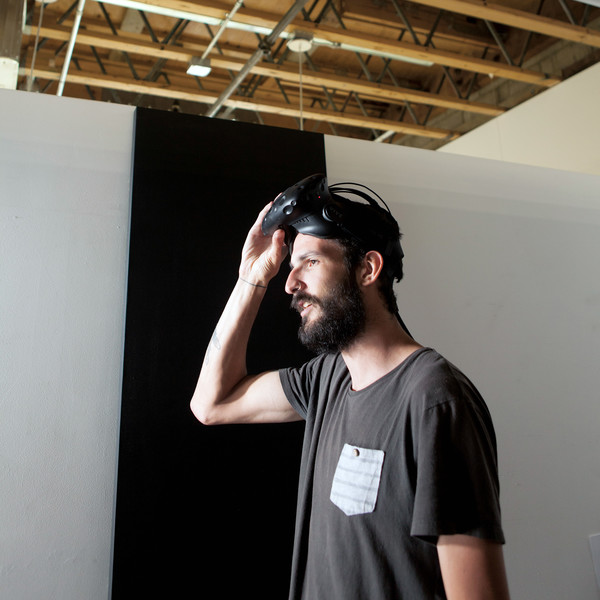video / alumni / photography-and-imaging
April 01, 2015
Writer: Bob Dirig, College Archivist
Found footage: ArtCenter Archivist recovers Keith Haring mural video
For the past several years we have been searching for footage of Keith Haring painting his mural in the Hillside Campus stairwell in 1989. After exhausting internal resources, we finally put out a call for information via ArtCenter’s digital channels and finally found success.
In late 2014, we received a tip that 1991 Photography alumnus and former faculty member, Hadi Salehi may have captured footage of the mural’s creation. We contacted his studio and were excited to discover that Salehi captured Haring with his Super8 camera as he painted. Fortuitously, Salehi had recently digitized the footage, along with a number of photographs he had taken of various phases of the process.
As an archivist, it was particularly satisfying to discover footage in such a well-preserved state. It was clear that twenty-five years ago, Salehi recognized the importance of the mural and Keith Haring’s visit. And its enduring relevance has only increased as years have past: The mural holds incredible significance as a memorial to artists who have died of AIDS, including Haring, who died in February 1990, just a few months after his visit.
Not only is Haring’s mural singular in its value as work of art. It’s also become a centerpiece of daily life at ArtCenter and a testament to the College’s ongoing commitment to public art and social justice. To see the mural come to life in the footage is truly significant. Salehi’s black and white silent film documents the experience, transporting the viewer into Haring’s orbit, as he worked on the mural.
The act of observing and capturing Haring’s creative process continues to resonate with Salehi: “It has been 25 years since I met Keith Haring. But I remember it like it was yesterday. I spent two days filming and taking photographs of him while he painted the mural. Watching him in the video, it appears as if he is not as sick as he was. He told me that he was in tremendous pain, and that the pain was unbearable at times. But when he worked he said it seemed like there was no pain. He said that the passion of creating was greater than the pain of his illness. For me, Keith is still alive because his works still feel fresh and creative. The impact of his works still grows —I want to see more like Keith.”






